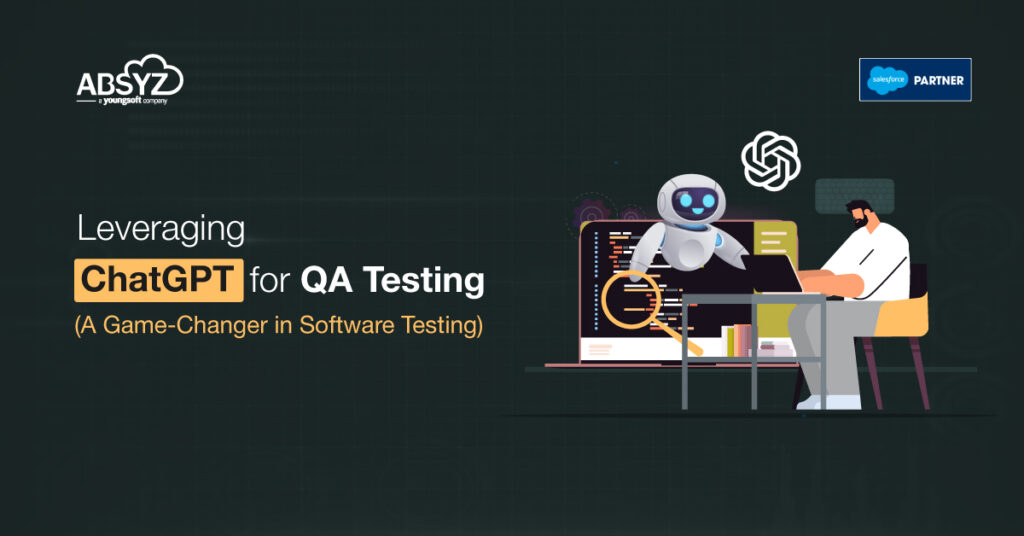Introduction:
Quality Assurance (QA) testing plays a crucial role in software development, ensuring that software applications meet the highest standards of performance, functionality, and reliability to deliver a seamless user experience. Artificial intelligence developments have brought forth the development of strong language models such as ChatGPT (Generative Pre-trained Transformer). ChatGPT for QA Testing offers a transformative approach for QA testers, enabling them to revolutionize their testing procedures. By leveraging ChatGPT’s capabilities, QA testers can expedite bug finding, refine test cases, and elevate overall software quality, ultimately enhancing the end-user experience.
Understanding ChatGPT:
A version of the GPT (Generative Pre-trained Transformer) language model built on the GPT-3.5 architecture, ChatGPT is designed to comprehend spoken language and produce responses that sound human. It is a product of OpenAI that can understand context and produce well-reasoned natural language responses because it is built on deep learning techniques and has been trained on a massive amount of text data from the internet. ChatGPT can be used in a number of ways to improve QA procedures.
The Role of ChatGPT in QA Testing:
Automated Test Case Generation: QA testers used to have to manually draft test cases based on user stories and requirements. By comprehending project specifications and creating test cases based on the inputs given, ChatGPT can be used to automate this process. In addition to lowering human error rates, this can greatly accelerate the testing process.
Support for Exploratory Testing: In order to find hidden flaws, exploratory testing simulates real-world situations. By interacting with the software and identifying edge cases that human testers might miss, ChatGPT can act as a virtual user. It can produce more reliable software and improve test coverage thanks to its capacity to mimic a range of user inputs and responses.
Bug Reporting and Triage: ChatGPT can be integrated into the bug reporting system, allowing users to describe issues in natural language. The model can then analyze and categorize the reported bugs, prioritizing them based on severity and impact. This streamlines the bug triage process and helps developers focus on critical issues promptly.
Test Data Generation: Generating diverse and comprehensive test data is often a challenge in QA testing. ChatGPT can be employed to create realistic and relevant test data by analyzing existing datasets and generating new data based on patterns and trends, thereby improving test coverage and data diversity.
Natural Language Test Scripting: Writing test scripts can be time-consuming and prone to human errors. By leveraging ChatGPT, testers can draft test scripts using plain language and natural commands. This approach not only simplifies the scripting process but also makes test cases more accessible for non-technical stakeholders.
Regression Testing Automation: Regression testing aims to ensure that new changes do not negatively impact existing functionality. ChatGPT can automate the creation of regression test suites based on past test cases and system behavior’s. This accelerates the testing process while maintaining a high level of test coverage.
Training and Onboarding: It can be difficult for new team members to comprehend testing protocols and intricate software systems. QA professionals can get immediate support and clarification by using ChatGPT to create interactive training modules and onboarding guides. This guarantees uniformity in testing procedures throughout the team and quickens the learning curve.
Challenges and Considerations:
While ChatGPT presents numerous benefits to QA testing, there are certain challenges and considerations to bear in mind
Model Bias: ChatGPT may reflect biases present in the data it was trained on, leading to biased test case generation and reporting. QA testers need to be vigilant and address these biases to avoid skewed results.
Context Understanding: Although ChatGPT is designed to understand context, it may occasionally produce ambiguous or irrelevant test cases. Testers should carefully review and validate the generated test cases.
Security and Confidentiality: When using ChatGPT for QA testing, it is essential to ensure that sensitive information, such as customer data or proprietary code, is not exposed inadvertently.
Conclusion:
Incorporating ChatGPT into the QA testing process can revolutionize the way software is developed and tested. ChatGPT for QA Testing presents an opportunity to transform traditional methodologies. Its capacity to automate test case generation, support exploratory testing, and aid in bug reporting can significantly heighten software quality and amplify user satisfaction. Nevertheless, it’s imperative for QA teams to approach ChatGPT thoughtfully, comprehending its limitations and challenges. By doing so, they can harness the full potential of this powerful tool within their testing arsenal. With a meticulous and strategic approach, ChatGPT can evolve into an invaluable asset for modern QA testing, fostering faster, more efficient, and more reliable software development processes.


















